Words & Photography ©Laurence Svirchev
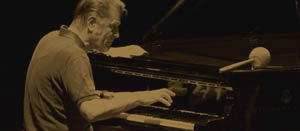 In his 2005 book Some Hustling This!, Mark Miller quotes a critic writing in 1916 about a performance of the Creole Jazz Band held in Victoria. BC, Canada: “Nobody but six negro eccentric players could shatter so many rules of a well-integrated band and make it so enticing to an audience. The cornet, clarinet, violin, guitar, trombone, and double bass are played by individuals with seeming indifference to what the other man was doing, but they always managed to arrive at appointed places in full accord.”
In his 2005 book Some Hustling This!, Mark Miller quotes a critic writing in 1916 about a performance of the Creole Jazz Band held in Victoria. BC, Canada: “Nobody but six negro eccentric players could shatter so many rules of a well-integrated band and make it so enticing to an audience. The cornet, clarinet, violin, guitar, trombone, and double bass are played by individuals with seeming indifference to what the other man was doing, but they always managed to arrive at appointed places in full accord.”
That unknown journalist might be surprised to know the succinctness with which he summed up, even as practiced today, the inherent mysteries of jazz improvisation. The Creole Jazz Band was the very first jazz group to play internationally. The enticing qualities of shattering the rules have not changed that much over the decades when it comes to advanced jazz and improvisation.
Many Black American musicians followed the Creole Jazz Band’s footsteps over the decades bringing the liberating art of jazz improvisation to the world. Those early efforts translated into jazz and improvised music becoming an international phenomenon. Today that music assumes many hybrid forms.
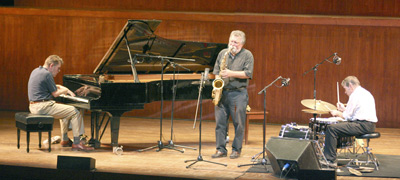 Which brings me to the eccentric musicians of the Schlippenbach Trio, in existence now for over 25 years. Each of them, Alexander von Schlippenbach, Evan Parker, and Paul Lovens, partially derived their highly individualized approaches from their exploration of Afro-American music. “The Georgia Peach? I adore him!” Lovens told me in 2000. He was referring to the wild-eyed music of Little Richard. Evan Parker occasionally gigs, with the Charlie Watts Big Band where he takes special delight in playing Ellington numbers. As for Schlippenbach, his early fascination with jazz came from listening to Willis Conover’s Armed Forces Network radio show, Oscar Peterson, and Horace Silver. Schlippenbach has also been one of the leading proponents of Thelonious Monk for more than four decades.
Which brings me to the eccentric musicians of the Schlippenbach Trio, in existence now for over 25 years. Each of them, Alexander von Schlippenbach, Evan Parker, and Paul Lovens, partially derived their highly individualized approaches from their exploration of Afro-American music. “The Georgia Peach? I adore him!” Lovens told me in 2000. He was referring to the wild-eyed music of Little Richard. Evan Parker occasionally gigs, with the Charlie Watts Big Band where he takes special delight in playing Ellington numbers. As for Schlippenbach, his early fascination with jazz came from listening to Willis Conover’s Armed Forces Network radio show, Oscar Peterson, and Horace Silver. Schlippenbach has also been one of the leading proponents of Thelonious Monk for more than four decades.
Schlippenbach, Parker, and Lovens know the roots of American jazz inside-out, but each decided against resting their careers on American-derived forms. They had other influences, of course, like the eccentricities of 20th century classicism, but they didn’t repose themselves in those genres either. Instead they went the route of improvisation, perhaps the highest and most difficult of art forms.
Their concert at Jazz em Agosto 2005– an 80-minute improvised set- began with a characteristic set of bass complexes from Schlippenbach, long tones from Parker and bell sounds from Lovens. Schlippenbach’s bass complexes were created by working inside the piano, striking the strings with a mace-like mallet and immediately strumming the strings. He let the wave-forms build and decay naturally before creating another set of complexes. The formality of the opening moments gave the impression of a ritualized pathway to a misterioso and shamanistic ceremony.
The first three minutes of drama prepared the minds of listeners for a series of high-energy, high-velocity excursions characterized by abrupt tempo changes, trio and duo interchanges, solo expositions, and a surprising deconstruction of a jazz standard. In spite of the appearances that the three musicians operate in complete independence of each other, when taken as a whole the excursions melded into a suite-like composition of sixteen sections that on occasion had stop-on-a-dime turnarounds. The music was so tightly energized that a listener who had her eyes closed may not have even noticed the difference when one or two musicians dropped out or laid back.
Parker spent of the first half of the concert on tenor saxophone, delivering short-fast phrases that typically started in the lower mid- and ended in the higher mid-range of the horn, each phrase getter slightly longer until he decided to end a cycle and start the process again. It was a nice touch that allowed the building of tension that could be instantaneously released, and that is exactly what happened at about minute twenty-five when he dropped out.
With Parker out, Schlippenbach continued to drive hard. Schlippenbach is as mosso on the pianoforte as anyone in the jazz and improvised world. And by that I don’t only mean the velocity of his hands. I’m also referring specifically to the way he expresses the range of the instrument. Dwelling in the mid-range of the piano, a proximate distance between the hands, makes life easier on the physical musculature. Schlippenbach, however, does not adopt that posture. He reminds one of Earl Hines or Randy Weston, not in the sense of rhythmic or harmonic content, but in the way his hands are as likely to be at opposite extremes of the keyboard -each hand producing independent lines- as they are to be at the extreme treble end. He is adept at the cross-hands technique which allows expressing fast transitions and complex clusters. And he has mastered the technique of pressing two keys with one finger at the same time. Those devices allow him to express a tremendous number of ideas.
At fifty-one and a half minutes into the concert, Schlippenbach and Lovens spontaneously moved into an incredible duet that sounded like water musically dropping into a bucket. It happened like this: high velocity from the three musicians (Schlippenbach muscular on the bass end, Lovens fast on the high hat and bass drum, a Parker express-train on tenor), Schlippenbach drops out for a few seconds, Parker then drops out completely, Lovens slows down on cymbals, Schlippenbach comes back, almost tentatively, as if making up his mind what to do next. Within three seconds, he starts the “raindrop” pattern, a complex and rapid rhythmic variation among three notes of rain and two notes of rain expressed at the treble end. Lovens follows the pattern immediately using rim shots, a few hits on the bass drum and then with very fast high hat work. The section, lasting about four and a half minutes was fascinating for its clear variation on a rhythmic theme, and also for the way Schlippenbach ended the variation, that is, with a turn to muscularity at the bass end.
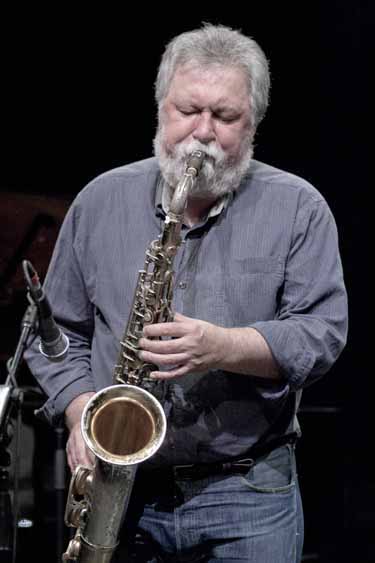 That set the stage for Parker to return, this time with soprano saxophone and an extended display of circular breathing. The technique –simultaneous inspiration and expiration of breath- is relatively easy for an experienced saxophonist, but it takes artists operating at the 99.9th percentile, someone line clarinetist John Carter, to make the technique worth listening to.
That set the stage for Parker to return, this time with soprano saxophone and an extended display of circular breathing. The technique –simultaneous inspiration and expiration of breath- is relatively easy for an experienced saxophonist, but it takes artists operating at the 99.9th percentile, someone line clarinetist John Carter, to make the technique worth listening to.
Parker is one of the few alive who is adept at that art. He has been doing it for over thirty years and has made a specialty of it. By hitting a set of lower notes and then through a combination of rapid articulation of the keys and changing embouchure, he is able to hit harmonics high above the nominal range of the soprano saxophone. Parker keeps things tight when he goes into this multi-phonics mode. He is fast on the instrument, the better to catch the nano-second intervals to derive higher-order harmonics.
In a 1992 interview for Coda, I mentioned that his fingers glissaded off the instrument’s keys. Parker said: “What you saw may be a kind of body language reinforcing the phrasing intentions. A lot of the most interesting parts of playing the saxophone are actually invisible. All the really interesting things go on inside with the tongue, the changes of the cavity, positions and shape of the jaw controlling the sound, articulations, and over-tones.”
Parker’s thoughts about invisibility are a kind of self-portrait. He is not a theatrical musician. The only thing that counts is what comes out of the horn. His stance on-stage is granite-solid, the body core unwaveringly in plumb while he blows. His face turns red from the super-saturation of the facial-neck blood vessels and the internal chest-neck pressures of maintaining a uniform column of air.
Some of the more marvellous passages of the concert occurred during Parker’s multiphonics. About half-way through the eight minute solo, Schlippenbach started to add some slow, simple bass notes, a nice color contrast to Parker’s intensity. Lovens, after maintaining one his few periods of laying out, came in with cymbal work, each strike on the metal designed to produce its own set of overtones that blended marvellously with Parker’s. The section ended at a hyper-tempo in the last paragraphs of the section that made one wonder how they could maintain control of their instruments at such speed.
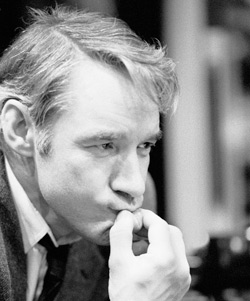 Lovens seemed to be the initiating force that catapulted the band into many of the tempo changes in this concert. This is a band made up of musicians with acute listening skills. Perhaps through long association, it has been left to Lovens to provide the rhythmic cues to change pace and space. At least that’s the way it felt at the Lisbon concert.
Lovens seemed to be the initiating force that catapulted the band into many of the tempo changes in this concert. This is a band made up of musicians with acute listening skills. Perhaps through long association, it has been left to Lovens to provide the rhythmic cues to change pace and space. At least that’s the way it felt at the Lisbon concert.
Lovens is a musicians’ musician. Once is Lovens is heard, he is never forgotten. Mention his name and the likely response is a nod, a brightening of the eyes, and a simple acknowledgement of his existence. Nothing more needs to be said because Titans, once witnessed, do not fade from the memory. Unless of course, you are speaking to someone from a world other than improvisation, and then the response is “who”? Non-improvisers can be quite myopic and Lovens is sort of a underground guy, modest and unassuming. He does not often play to North America. He has recorded many times over the decades, but rarely under his own name. Oh yeah, in addition to being a kit-drummer, he is also known for virtuosity on a hand-held rip saw.
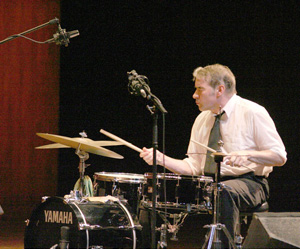 Paul Lovens sits low on the kit stool, the limbs all right angles with shoulder and neck slightly slumped forward. His arm motions are concentrated in the wrists, the elbows steady. That gives him a fluidity that masks the underlying strength with which he can strike the cymbals or drum-heads. Like band-mates von Schlippenbach and Parker, he is fast. So fast that one wonders when his music will implode, vibrate apart simply due its velocity. But it never does. The control that comes from the strength-speed-fluidity feed-back mechanisms results in an eloquent musicality that dazzles the listener. One more thing Lovens excels at the bass drum. The bottom end is always there, functioning in complete independence with its own set of harmonics.and not simply as an adjunct to the upper drums and cymbals. Between Lovens’ bass drum and Schlippenbach’s use of the piano’s bass, the trio has a full-spectrum sound at the bottom end.
Paul Lovens sits low on the kit stool, the limbs all right angles with shoulder and neck slightly slumped forward. His arm motions are concentrated in the wrists, the elbows steady. That gives him a fluidity that masks the underlying strength with which he can strike the cymbals or drum-heads. Like band-mates von Schlippenbach and Parker, he is fast. So fast that one wonders when his music will implode, vibrate apart simply due its velocity. But it never does. The control that comes from the strength-speed-fluidity feed-back mechanisms results in an eloquent musicality that dazzles the listener. One more thing Lovens excels at the bass drum. The bottom end is always there, functioning in complete independence with its own set of harmonics.and not simply as an adjunct to the upper drums and cymbals. Between Lovens’ bass drum and Schlippenbach’s use of the piano’s bass, the trio has a full-spectrum sound at the bottom end.
To end the concert, one might have expected a last note slam-on-the-brakes from this high energy group. But that was not the case. If short meditative conjugations opened the concert, the closing minutes were an extended contemplation. In particular, Lovens used his sticks to scrape the cymbals into high frequency overtones semblable to the effects Tibetan monks create on their singing bowls. Parker sounded as if he were playing a shakuhachi, Schlippenbach worked both the inside and outside of the piano, dampening strings striking keys simultaneously, occasionally slamming a dark bass cluster.
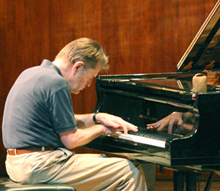 The last notes of the concert were four strokes to the toms from Lovens, spaced to suggest an emptiness that would be filled at a later date. It took a full ten seconds for the audience to respond with full applause, an indication that the music was still swelling inside them, they themselves needing time to resolve the reverberations. Had the Canadian journalist from 1916 been able to attend the Lisbon concert, he may have slightly amended his commentary to express amazement at how these three musicians always managed to arrive at anointed places in full accord.
The last notes of the concert were four strokes to the toms from Lovens, spaced to suggest an emptiness that would be filled at a later date. It took a full ten seconds for the audience to respond with full applause, an indication that the music was still swelling inside them, they themselves needing time to resolve the reverberations. Had the Canadian journalist from 1916 been able to attend the Lisbon concert, he may have slightly amended his commentary to express amazement at how these three musicians always managed to arrive at anointed places in full accord.